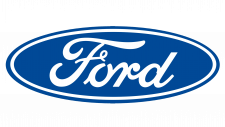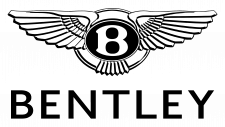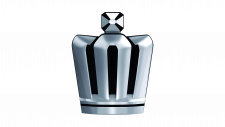Datsun Logo
Datsun stands as a notable automotive brand, conceived by the visionary minds at Nissan. Its birthplace lies in Japan, serving as a testament to innovation and engineering prowess. Datsun’s creation aimed at crafting affordable, reliable vehicles for the masses. Emphasizing simplicity and functionality, it carved a niche in automotive history. This brand symbolizes a blend of tradition and forward-thinking, catering to those who value practicality alongside performance.
Meaning and History
The Datsun story commenced in the early 20th century, marking its inception as a symbol of mobility for many. In 1931, Datsun rolled out its first car, setting a precedent for quality and affordability. Key milestones include the 1950s and 1960s, when Datsun gained international acclaim, especially in markets like the United States. It became synonymous with durability, fuel efficiency, and cost-effectiveness, attributes that propelled its popularity. The 1980s witnessed a strategic rebranding, as Datsun transitioned back to its parent name, Nissan, in many markets, aiming to unify its global presence under a single, powerful brand identity.
What is Datsun?
Datsun is a historic automobile brand, originally developed by Nissan Motor Co. in Japan. It symbolizes affordable and reliable transportation, focusing on compact and efficient vehicles. Over the years, Datsun has evolved, embodying the spirit of innovation and the pursuit of accessibility in the automotive world.
1931 – 1935
The emblem features a bold, uppercase “DATSUN” ensconced within a dark blue rectangle, its letters white for stark contrast. Overarching this, a large red circle, reminiscent of the Japanese flag, provides a backdrop, symbolizing origin and pride. The design embodies a sleek, classic feel, merging national identity with corporate branding. The font, modern and clean, speaks to the brand’s forward-looking ethos while paying homage to its heritage. This logo, a blend of simplicity and statement, captures attention with its stark color scheme and uncluttered layout.
1935 – 1965
The logo retains its patriotic red circle, a nod to the Japanese flag, yet the rectangle housing “DATSUN” now softens to a lighter blue. The typography stands revamped, with the letters appearing slightly bolder and more defined, enhancing legibility and impact. There’s a subtle shift in the character spacing, breathing more room into the design, and suggesting openness and clarity. Overall, the logo maintains its core identity while refining its features for a crisper, more modern appeal.
1951 – 1963
This iteration of the Datsun logo presents a striking transformation. The brand name now sits on a textured red background, conveying depth and energy. Surrounding the lettering is a sleek, metallic border, suggestive of automotive prowess and strength. The letters themselves, bold and pronounced, feature a three-dimensional effect, enhancing visibility and modernity. This design leap represents a dynamic turn, aligning with the progressive spirit of the mid-20th century. It’s a logo that’s not just seen, but felt.
1963 – 1964
This logo showcases a sweeping departure from its predecessor, adopting a fluid, cursive script for “Datsun”. The font is sleek, imbued with motion and grace, reflecting a more personalized, signature-like style. The linear element beneath the word seamlessly connects each letter, suggesting unity and forward momentum. Gone is the boldness of block letters, replaced by the elegance of continuous strokes. This design speaks to a brand embracing sophistication and a more dynamic automotive era.
1964 – 1965
Transitioning from cursive elegance, the logo now embraces a futuristic aesthetic with its italicized, sans-serif typeface. The “Datsun” name adopts a cool blue shade, outlined by crisp white, which pops against a clean background. The elongated “D” and “n” stretch out, suggesting speed and advancement. The design’s simplicity aligns with modernist sensibilities, reflecting a shift to a more contemporary, streamlined look. It represents a brand in motion, ready to drive into a new age.
1965 – 1976
Returning to its roots, the logo reembraces the iconic red circle, directly invoking the Japanese flag. The “DATSUN” lettering is now stark white, set against a deep blue rectangular backdrop, asserting a bold presence. This design strips away the previous logo’s motion and futurism, opting instead for a static, balanced, and strong visual statement. The typeface is straightforward, no-nonsense, and robust, a clear nod to the brand’s reliability and established history. This logo reasserts Datsun’s identity with classic, timeless elements.
1965 – 1986
Stripping away color and national symbolism, the logo now adopts a monochrome palette, embracing minimalism. The “DATSUN” lettering is bold, straightforward, and black, standing out with no need for embellishment. This typographic approach discards graphical elements, focusing solely on brand name recognition. The design’s simplicity signifies a confident brand identity, one that speaks clearly and directly. It’s a modern, no-frills declaration of the Datsun brand.
1970
The logo has transitioned to a single, soothing blue outline. “Datsun” adopts a more relaxed and rounded typeface, diverging from the stark black solidity of its predecessor. The design’s fluidity and open contours offer a sense of approachability and friendliness. This airy outline suggests innovation without abandoning the brand’s established familiarity. The logo communicates an evolution towards accessibility and modern design sensibilities.
1970 – 1972
The logo has shifted to a three-dimensional appearance with a bold, grey, gradient-filled oval encapsulating the name. “DATSUN” emerges in raised white letters, creating a tangible feel. This new design is framed by a sleek black border, accented by a thin red line, adding a subtle hint of color. The emblem evokes a sense of depth and sophistication, a departure from the previous logo’s airy and linear form. It projects a more contemporary and robust brand image, infusing a sense of innovation and quality.
1972
Gone is the three-dimensional gradient. The logo now features stark white letters against a solid black background, creating a strong contrast. This minimalistic rectangle showcases “DATSUN” in a clean, sans-serif font. The design conveys straightforwardness and a return to basics, focusing on clarity and impact. The absence of additional colors or embellishments emphasizes the brand’s name, a move that could symbolize a commitment to foundational values and simplicity.
1972 – 1976
The iteration presents “DATSUN” in solid black, with an assertive and weighty serif font. The logo has shed its previous framing, opting for an unbounded, expansive feel. Each letter is crafted with sharp angles and bold lines, suggesting a strong and enduring presence. This typeface marks a pivot towards a more classic and timeless design, perhaps to evoke a sense of heritage and solidity within the brand’s identity. It’s a clear signal of tradition and strength in the automotive industry.
1976 – 1986
The Datsun logo revisits its heritage colors, with white lettering against a dark blue rectangle and a bold red circle backdrop. This color scheme, reminiscent of the Japanese flag, reinvokes national pride and origin. The design holds onto the simplicity of the previous iteration with a clean, sans-serif font but reintroduces color to convey energy and diversity. It’s a harmonious blend of traditional imagery and modern minimalism, reflecting a brand that honors its past while looking ahead.
2012 – 2022
The logo has evolved into a more sophisticated design with a metallic finish, creating a sleek, modern appearance. “DATSUN” is centered in a dark blue, glossy rectangle, exuding elegance and contemporary style. Surrounding this, a three-dimensional metallic ring, featuring silver and chrome hues, suggests precision and craftsmanship. The emblem radiates a premium feel, indicative of technological advancement and quality. It’s a significant shift towards a futuristic and high-end brand image, intended to stand out in the modern market.
























